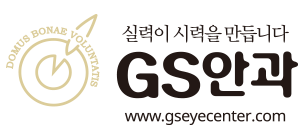Follow Us
10 Street Name, City Name
Country, Zip Code
555-555-5555
myemail@mailservice.com
Is LASIK Worth It? Pros & Cons of Laser Eye Surgery in Korea
Thinking about getting LASIK eye surgery in Korea? With cutting-edge technology, expert surgeons, and competitive pricing, Korea is a top destination for vision correction. But is LASIK the right choice for you? Here’s a deep dive into the pros and cons of LASIK in Korea to help you make an informed decision.
🔹 What is LASIK?
LASIK (Laser-Assisted In Situ Keratomileusis) is a popular vision correction surgery that reshapes the cornea to correct nearsightedness, farsightedness, and astigmatism. The procedure is quick, safe, and virtually painless, offering clear vision without glasses or contact lenses.
✅ Pros of LASIK in Korea
1. Affordable Pricing Compared to Other Countries
💰 Cost in Korea:
₩1.5M–₩3.5M ($1,100–$2,600 USD) for both eyes
💰 Cost in the US:
$2,000–$4,500 per eye
💰 Cost in Europe:
€1,500–€3,000 per eye
Korea offers world-class LASIK procedures at a fraction of the price compared to the US and Europe, making it a cost-effective choice for medical tourists.
2. Advanced Laser Technology
Korean clinics use the latest femtosecond lasers and wavefront-guided systems to ensure precision and minimize risks. Some of the best LASIK options include:
- ReLEx SMILE – Minimally invasive, flapless surgery with a faster recovery time.
- Custom LASIK & LASEK – Tailored to your unique eye shape for better results.
3. Highly Experienced Surgeons
Korea’s LASIK surgeons perform thousands of procedures annually, ensuring high success rates. Many are internationally trained and board-certified, giving patients confidence in the quality of care.
4. Fast & Convenient Procedure
- Surgery takes only 10–15 minutes per eye
- Minimal downtime – Most patients resume daily activities in 24–48 hours
- Same-day consultation and surgery available at many clinics
5. Foreigner-Friendly Clinics
Many LASIK centers in Korea cater to international patients, offering:
- English-speaking doctors and staff
- Transparent pricing with no hidden fees
- Medical tourism assistance (hotel & transportation packages)
❌ Cons of LASIK in Korea
1. Not Everyone is a Candidate
You may not qualify for LASIK if you have:
- Thin corneas (LASEK or SMILE may be better)
- Severe dry eye syndrome
- Keratoconus or other corneal conditions
Pre-surgery tests will determine if LASIK is right for you.
2. Potential Side Effects
While most patients experience clear vision within a day, some may have temporary side effects like:
- Dry eyes (common but manageable with eye drops)
- Glare or halos at night (improves over time)
- Mild discomfort during recovery
3. Need for Enhancements in Some Cases
While 90–95% of patients achieve 20/20 vision, some may need a second enhancement procedure if vision regresses over time.
Is LASIK in Korea Worth It?
YES! If you’re looking for:
✅
Affordable, high-quality LASIK surgery
✅
Experienced surgeons and advanced laser technology
✅
A fast, safe, and effective vision correction solution
However, it’s essential to consult with a trusted clinic to determine if LASIK is right for you.
🔍 Looking for the best LASIK clinics in Korea? Contact us today to schedule your consultation!
Intraocular Lens Options
| Lens Type | Features | Ideal For |
|---|---|---|
| Monofocal IOL | Provides clear distance vision, requires reading glasses | Patients who don’t mind using reading glasses |
| Multifocal IOL | Corrects both near and distance vision, reducing dependency on glasses | Patients who want glasses-free vision |
| Toric IOL | Corrects astigmatism along with cataracts | Patients with astigmatism needing clearer vision |
Our specialists customize lens selection based on your lifestyle and vision needs.
Cataract Surgery Step-by-Step Process
STEP 1: Comprehensive Eye Examination
👁 Detailed eye tests to assess cataract severity and choose the ideal IOL.
STEP 2: Painless Cataract Removal Surgery (10–15 Minutes)
💡
Laser or ultrasound gently removes the
cloudy lens.
🔍 A
premium artificial IOL is implanted for
permanent clear vision.
STEP 3: Quick Recovery & Aftercare
✅
Most patients experience clear vision within 24-48 hours.
📆 A
follow-up check ensures proper healing.
Post-Surgery Care & Recovery Guidelines
✅
Wear protective sunglasses to prevent UV damage.
✅
Avoid heavy lifting & eye rubbing for a few weeks.
✅
Use prescribed eye drops to prevent infection & inflammation.
✅
Attend follow-up visits to monitor healing progress.
Most patients return to normal activities within a few days!
Cataract Surgery vs. LASIK – Which One Do You Need?
| Feature | Cataract Surgery | LASIK Surgery |
|---|---|---|
| Treats Cloudy Lens? | ✅ Yes | ❌ No |
| Removes Corneal Tissue? | ❌ No | ✅ Yes |
| Permanent Vision Correction? | ✅ Yes | ✅ Yes |
| Corrects Astigmatism? | ✅ Yes (Toric IOL) | ✅ Yes |
| Ideal for Aging Eyes? | ✅ Yes | ❌ No |
🔹 If you have
blurred vision due to cataracts,
cataract surgery is the best option.
🔹 If you have
good eye health but need vision correction,
LASIK may be more suitable.
Book Your Cataract Surgery Consultation at GS Eye Clinic Today!
At GS Eye Clinic in Gangnam, Seoul, we provide world-class cataract treatment with the latest laser technology and premium IOL options, ensuring safe, effective, and long-lasting vision correction.
📞 Contact us now to schedule your cataract evaluation and restore clear, youthful vision today!
Ready to visit our clinic?

GS Eye Center is committed to providing exceptional ophthalmology that not only delivers outstanding results but also ensures patient comfort and fosters a sense of trust. With cutting-edge technology and a patient-centered approach, we strive to make eye care accessible, effective, and compassionate, always prioritizing the well-being of our patients.
Contact Us
Address: Gangnam Station Exit 1
8·15·16F, 390, Gangnam-daero, Gangnam-gu, Seoul
Tel: +82-10-3774-4561
Email: gseyeweb@naver.com
Gangnam GS Eye Center









